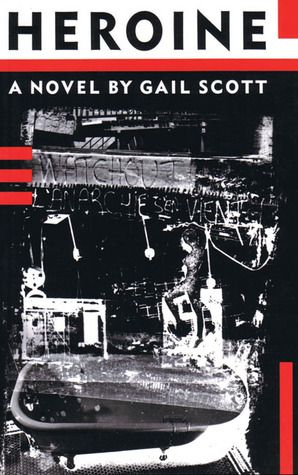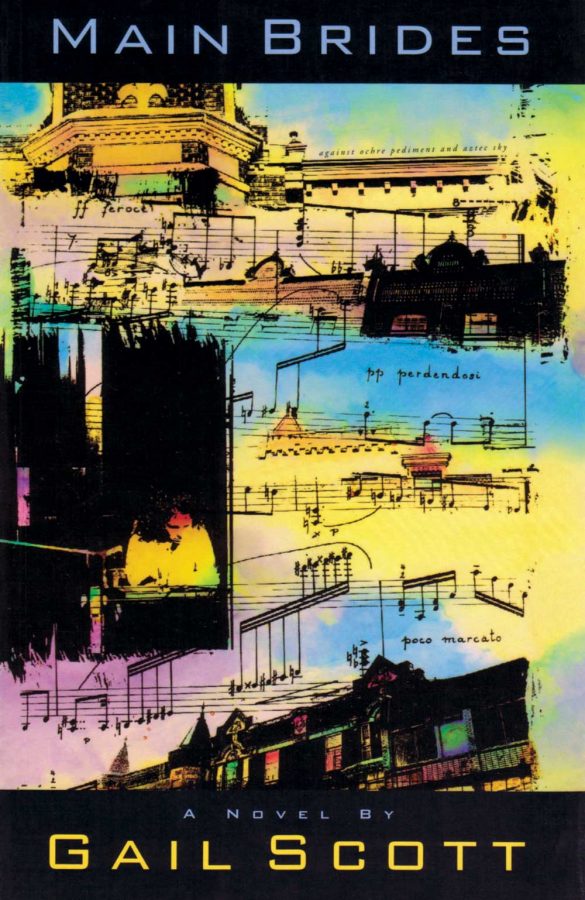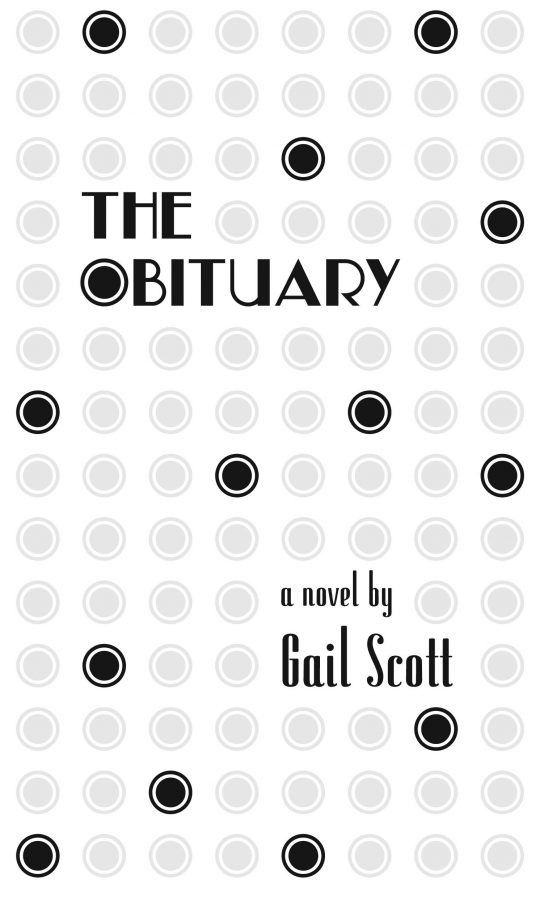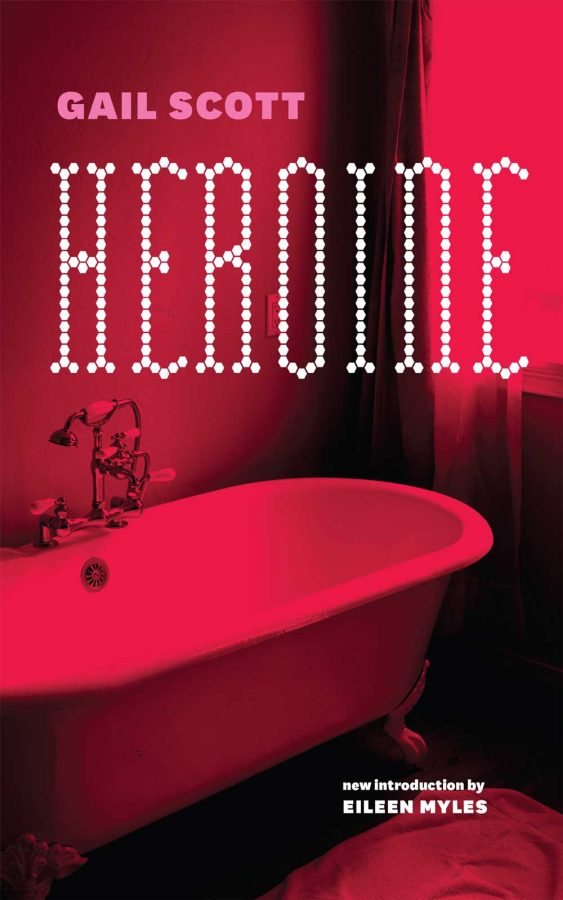
In October 2019, in Vancouver, Gail Scott launched the new revised edition of her groundbreaking novel Heroine. As she often does, Scott stayed at the Quartermain house, and Meredith Quartermain took the opportunity to engage with Scott on reinventing relations between narrator, author, and character. Along the way they talked about class, detective work, and what writers Scott has conversed with in her writing mind.
MQ: Can you talk about prose form and the need to reinvent and reshape it? Have your goals changed since you started formally experimenting with your writing in the 1980s?
GS: A huge question. My trajectory began in journalism, which offered an opportunity to see how ideology is conveyed via form. The pyramid print-news article, with its often sensational lead backed up by multiple references to authority to support the original point, kept the act of reporting so narrowly focussed that it felt like training to think inside the box. Real discussion of class, for instance, got suppressed or distorted. We hear politicians speaking over and over of a middle class the the group the needs support, until it seems like everyone (save the rich, of course) is middle class. Before too long we get a Ministry of the Middle Class. This iterative notion of narration often co-extends to the novel form.
Heroine, first published in 1987 and just re-issued with a terrific intro by Eileen Myles, was the beginning of my taking on journalism, in as much as it represented general public discourse, and experimenting on several fronts. I wanted to represent Montréal, which was a pretty extreme place in those days, without giving in to the temptation to exoticize or sensationalize the site. I wanted to use absolutely accurate language. Montréal English, for example, has its own cadence and these differences in language express differences in everyday life. Leonard Cohen was a mentor in that respect.
I also wanted to construct an Anglophone narrator operating on a series of cusps: not only is she trying to fit into a Francophone indépendantiste scene, she is also bleeding over a male revolutionary, while at the same time lusting after her friend Marie—and possibly after her non-monogamous male lover’s girlfriends. With a narrator positioned on these either/or cusps, I needed to replace the forward motion of narration with a spiral shape; the story keeps getting told from modified angles; the narrator has no fixed point of view.

MQ: Why is it so important to escape conventional narrative structures like the arc? How did you define the experimental novel back in the 80s? How do you define it now?
GS: I didn’t and don’t have a precise definition of how to write experimental prose. For me, the word experiment is conjunctural with the needs of the time/space in which I am writing.
What needs undoing is the relationship between narrator/narration, and what is fundamental is the question, who speaks when one speaks? And who has the right to speak? This investigation is poetic: my sentences represent a re-suture once the formal elements, the process of narration, even the speaking subjects, have been taken apart, rendered porous to both aesthetic possibilities and the street. To do work takes a great deal of time. And there is always the risk of failure.
In Main Brides, I began playing with the idea of upsetting the usual set of relations that involve author/narrator/character by blurring the borders of those elements. Main Brides is set on a hot June day. A woman is sitting in a bar in Montreal’s Main, drinking to push down the disturbing scene she saw that morning when a woman’s body was found in the park. To focus herself, she tries to guess the stories of other women who come and go at the bar. In the early 90s, when the book was published, many women artists were doing installation. I thought of Main Brides as an installation and wanted to call it that, but Coach House wouldn’t let me. I’ll never forget the Stan Persky review in The Globe and Mail which said, “Nothing happens in this novel.” Of course nothing happens! “Nothing” as defined by anything resembling a novel arc. The woman in the bar drinking and telling stories about other women entering the bar may be telling her own story or theirs. But there are plenty of gaps within the narrative that allow space for the reader to play and construct meaning.

MQ: “Lacks narrative drive” is a criticism I’ve encountered myself as a writer. Often what that comment reveals is simply someone who can’t see what is being narrated. The narrative might be on a quest for information, gradually finding and filling in, in the way of a puzzle the various pieces. Or the narrator may be wandering toward, in the way of multiple textual pleasures, a fresh world view, one in which the narrator is not separate from her world (the masculinist view) but intimately woven together with it. Can you talk a little more about how you are challenging the unified narrative voice in standard prose structure?
GS: The answer to this question should start with Heroine, my most novel-like novel. It tries to create a life through the visible process of reaching for adequate language to express wilful estrangement relative to the dominant context. The narrator is struggling to exist and be useful in collective, collaborative, participatory movements. But how does she deploy language to outwardly express inner contradictions of class and gender and other contradictions in her everyday struggle? This question is germane to all my work.
In my most recent novel, The Obituary, I attempt to disperse the narrator and thus the narration. The narrator is fractalled: she is at once a woman on a bed in a Montréal triplex, dead perhaps, or just “out of it”; a horny fly on the wall, representing the woman’s id or animus; and a politically conscious lesbian historian who speaks up from the basement of the building (and the story) trying to set the history straight and perhaps trying to take charge of the narrative. There can be no consensus or focus on the part of this narrating group because the subject of the novel is the problem of a family unable to express the repressed Indigenous line of their ancestry, which is also the history of this country. This, as we know, is co-extensive with settler culture and the assimilationist pressures of settler policy in Canada. But The Obituary is not a quest novel. No truth about origins is discovered. It is a story of lies and rumours of lies.
The 90s novel My Paris attempted to limit the agency of the protagonist by the grammatical device of replacing the active verb with the present participle. The story or the storyteller is committed to a slow indefinite backward and forward tempo, instead of marching onward. There is something inherently capitalist about the trajectory of “ever onward” one finds in so many novels.
MQ: Yeah, that capitalist methodology requires a story product that is addictive, a story product that appeals to our basic human psychology, which has to do with identifying with a protagonist who is struggling with some problem or opponent or is threatened by some danger. The goal of the capitalist story is to hook you into reading on with the promise of overcoming the opposition. And yet even though this kind of storyline is absent in Heroine, I always wanted to continue reading. . . . Actually, it seemed to me that both Heroine and The Obituary were detective stories unfolding clues to a bigger picture. Could you talk about that and how this might connect to the spiral structure you mentioned?

GS: So glad you have sensed that—I am absolutely addicted to detective tales, save the endings, which are generally too neatly tied up. In writing, my idea is to play with form until I figure out how to unpack the mystery of the ever-changing now. There is a fair amount of shape shifting from novel to novel because the question of how to write is dependent upon the circumstance, the pressures, of the era.
I try to listen hard to the entire moment, which includes the particularities of conversations on the street, as well as the wider social and political issues going on in the city, the province, the state—all of this impacts the question of how to compose or put together a novel.
Poetry is so good at capturing the moment for it can suggest without summary, without looking back. To work in sentences is to be solicited to work something out, to find a way to tell a story that holds multiple complexities, yet somehow write it so that, like in film noir say, it has the funkiest surface possible. In my private language I call this last stage “writing over the top.”
MQ: “How should a person be” is the central question (and title) of a 2013 Sheila Heti novel, and it’s a question related to patriarchy and other structures of power. How should a person be so that she doesn’t reinforce the power structure, but still makes herself visible within it. How does Heroine investigate the idea of the heroine as fictional construct in connection with this?
GS: You are raising an important issue here. The question how should a person be as posed by Heti’s novel is slightly displaced in Heroine, where there is a valiant attempt to avoid the should. Though the protagonist is constantly castigating herself for her failure to be a good revolutionary (disciplined, aware, courageous, non-possessive, capable of sharing), her conversations—especially with her friend Marie—are more about how a woman writer might represent women with greater fluidity and more room for difference, than has historically been accomplished in writing by men. I venture that on the whole, as well, the term should carries less weight if one is queer. One has by definition already failed at the pre-defined gendered should. There is a refusal among Gail and Marie’s peer group to be shaped by the expectations of others, a refusal to aim for the normal trappings of individual success. While Gail bemoans that a woman is expected to have a different way of walking, talking, and dressing for every role and occasion, what she and Marie really want is to excavate under this surface to find new ways of speaking about and for themselves as they perhaps are. This search is both feminist and queer.

MQ: Maybe it’s more a question of how could a person be rather than how should. And doesn’t this go to the root of personhood, which again is unconsciously defined in western capitalist culture to be the strong, silent male figure, heroically pitting himself against the world—a world seen as entirely separate from him, where his raison d’être is to conquer and control it?
GS: I agree that there is a sub-liminal phallus in the collective notion of the hero; perhaps the most convincing non-binary remake of this notion can be found in trans literature. However, I am not optimistic that we have seen the last of it. Every time we feel we are making progress on this most central of human questions, the question of what constitutes equality, we are swatted by a vigorous backlash. In the latter part of the twentieth century we witnessed disdain for the second-wave feminist surge of the 70s and early 80s. Today we are seeing similar regressions.
MQ: I am keenly aware of your compositional time as I wait for your next book, which will involve sojourns in New York City and investigations of American life, letters, and politics. How have you been influenced by writers outside of Canada?
GS: If to read intently and thoroughly is to absorb influence, I am always attracted to writers who rock the boat, who see poetry as resistance to the status quo, writers who have been and continue to be part of a conversation about the connections between writing and politics. As far as American writers, these include the queer writers of San Francisco who—along with a handful of East Coast writers—comprise the New Narrative movement. They include people in the radius or wake of the Language movement and the New Conceptualist movements, but certainly not limited to that. They also include writers of diverse minorities and Indigenous writers who have been carving new waves. And, of course, there are the Belladonna feminists. To name names, I would need half a page.
MQ: Can you talk about New Narrative as it was defined in the 80s? How has it evolved into forms today that you didn’t imagine then?
GS: The best definition of New Narrative was coined by Robert Gluck: “I wanted to write with total disjunction and total continuity.” In fact, I knew nothing of the New Narrative movement at the moment of its inception in the 80s. But, like the queer writers in Bob’s germinal New Narrative workshop, the feminists in our Montréal group were simultaneously resisting the erasure of the author-subject in writing as proposed at the time by the poetry avant-garde. Why would we kill off the female subject—or la sujette as Louise Cotnoir was fond of saying—that did not yet properly exist in literature? We were not about to erase what in principle did not exist or at least did not exist as real (at least in our minds) in the literature handed down through the generations. For similar reasons, the queers in the San Francisco New Narrative workshop were having nothing to do with the death of the subject as proposed by the avant-garde Language Writers. What was different in Québec was that most of the women in the Theory, a Sunday group were less committed than the San Francisco group to the defense of narrative, even new narrative. We called what we were doing fiction/theory.
MQ: You mentioned some women philosophers whose work was available when you were writing Heroine, who have now disappeared from contemporary discussion. Who were these philosophers and why are they interesting?
GS: I don’t think these women have entirely disappeared, but they do not have the sustained importance that they had at the height of second-wave feminism. There was Luce Irigaray, author of the famous This Sex Which Is Not One, who outrageously (for many) linked the movement of female orgasm to the shape or movement of story; the arc, the high dramatic moment and the fall classically shaping the novel was associated by Irigaray with male orgasm.
MQ: Whereas it seems to me the kind of story structure your books enact—the spiral, recursive, fractalled structure—reflects the multi and diverse orgasms of the female . . . ?
GS: I adore Irigaray’s idea, its boldness, its outrageousness. But I have always felt it is missing something to do with how body/language and the culture impact each other beyond, or perhaps up to and including . . . how we cum. For instance, another author important to me was Christine Buci-Glucksmann; her book on Benjamin and the baroque was instrumental in opening my eyes, particularly to Benjamin’s Arcades Project, a volume that suggested to me different ways of recounting, notably via montage. Benjamin brilliantly combined his own often obsessive inclinations (as a collector, for example) with the reciprocal relations of “now-time” and history. He pitted the unconscious against enlightenment and historicity, and pushed our ways of thinking about how to use time in recounting into a space of alterity.
MQ: Who are some other innovators who inspire you today?
GS: I prefer to think about conversation rather than inspiration—even if only in my reading head, I converse with the writers I admire. I have long enthusiastically frequented the poetry of Cree writer Louise Halfe. Her poetry speaks beautifully and poignantly of the lives of Indigenous women and men, revealing in her work huge swaths of life and possibility. The presence of the Cree language in her poems, and its impact on the written English, is fascinating for what it covers and uncovers. I adore the novels of Richard Wagamese. But these two are the tip of the iceberg, the older generation of a vast explosion of Indigenous writing happening right now. Of late, I am, like so many, stunned by younger Indigenous authors who are exemplary innovators: Liz Howard, Jordan Abel, Joshua Whitehead, Billy-Ray Belcourt, to name a few (and three out of these four identify as queer, and that signifies as well). When I was young, the Francophone writers in an era of massive revolt in Quebec similarly taught me a great deal about the relations between writing/language, and the social.
MQ: You’ve mentioned that avant-garde practice has risen up and fallen back at various points in the twentieth century. Can you talk a little more about that?
GS: The avant-garde reappears cyclically, in conjunction with other factors. Often you hear people referring to the notion of avant-garde as dead or passé. I agree that the term is problematic, but it is useful for demonstrating that the emergence of radical poets, those whose sense of urgency is forcément in relation to the socio-political situation of a given era, is inevitable. The avant-garde emerges in company with radical social movements that, themselves, advance and recede. Its lessons are eventually partially absorbed, as are those of social contestation. I started writing in a period of significant social change that spawned artists and writers looking for new modes of expression. In art and politics, there is reform and revolution. The former is well-meaning, liberal, and not prepared to give up profiting from power structures such as capitalism and racism. Then there are movements, and they often come from justice-seeking minority groups, that understand huge upheaval is required for there to be real, systemic change. I believe we have come back to that time again, and with it a new generation of artists, a new sense of urgency.

—
Gail Scott & Meredith Quartermain: I call this last stage “writing over the top” is featured in Issue 3.41 (Summer 2020). To read the piece in its entirety purchase a print copy or view it digitally for free here.

